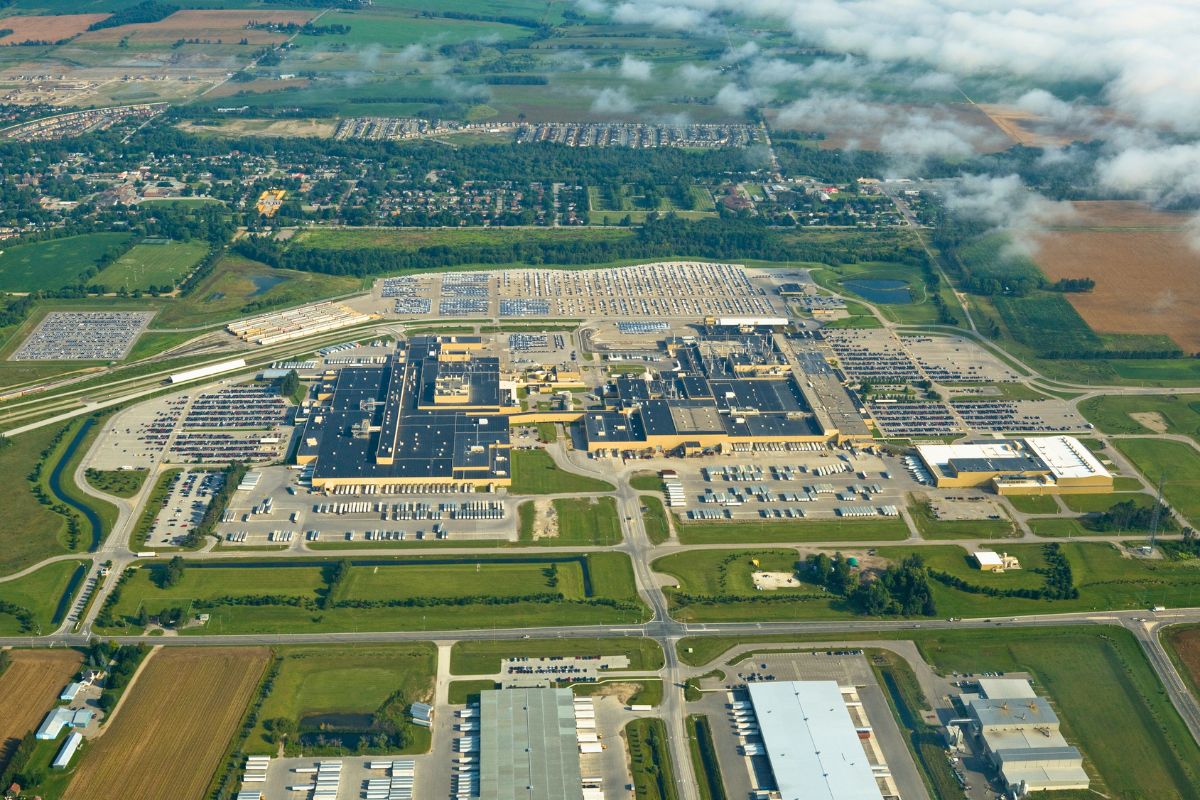In this newsletter, we’ll take a look at some of those practices. There’s an awful lot happening out there, so we’ll have to pick and choose—if we miss your favourite brand or concept, by all means let us know because it’s likely we’ll revisit the subject.
Renewable energy at scale
Ford has pledged to source 100% renewable energy globally by 2035, and several of its plants already operate on wind and solar power. Michigan’s factory, for example, uses renewable energy and achieves zero landfill waste. Similarly, Tesla’s Gigafactories are powered largely by solar arrays, reducing reliance on fossil fuels, while Ferrari has committed to sustainability at its Maranello plant: its new €200 million ‘e‑building’ features 3,000 solar panels and rainwater harvesting, with a design intended to enhance efficiency and staff well‑being.
Energy‑efficient equipment and smart systems
Factories across the board are investing in energy‑efficient machinery, smart grids and energy recovery systems. These systems optimise real‑time energy usage and reclaim waste energy (e.g. regenerative braking in production equipment, which converts kinetic energy into electrical energy for use as required).
Additive manufacturing (3D printing)
Additive manufacturing, or 3D printing, has the obvious advantage of using only the material that’s needed to create something—as opposed to traditional subtractive manufacturing, where material is cut away from a solid block. Within the automotive sector, additive manufacturing is used to create custom tools and jigs, print lightweight brackets and housings and test prototype components before full production.
General Motors has used additive manufacturing to produce lighter overhead‑conveyor parts, cutting weight and allowing for on‑site production instead of off‑site machining. A number of manufacturers, including McLaren and Aston Martin, have adopted Divergent’s DAPS platform—which employs AI‑led design and 3D printing to dramatically reduce chassis material use and outright waste.
Divergent’s DAPS technology is perhaps best exemplified by the Czinger 21C hypercar (Czinger is a product company within Divergent, also founded Kevin Czinger) built using a disruptive blend of Human-Ai design, 3D printing technology and automated assembly.
Sustainable and circular materials
Recycled and bio-based materials are increasingly replacing traditional plastics and metals. The BMW i3 was the first volume-production vehicle to use carbon-fibre-reinforced plastic, the Audi A3 contains recycled aluminium and natural fibres and the Toyota Prius is an established user of plant-derived bioplastics.
Ford has also adopted bioplastics and soy-based foam in its vehicle parts; the Ford Bronco Sport features components made from 100% recycled ocean plastics.
Lean manufacturing & waste reduction
Lean principles—particularly Toyota’s just‑in‑time systems—help reduce overproduction and resource waste, while closed-loop water systems are also making a splash, such as the near-zero freshwater usage in Ford’s Chennai plant. More broadly, recycling initiatives (end-of-life, vehicle disassembly partnerships), packaging reduction, and materials recovery are reducing landfill waste across OEMs.

Advanced battery manufacture
Cutting-edge methods are emerging in EV battery production. AM Batteries has developed a spray‑coating process that eliminates lengthy drying, toxic solvents, potentially reducing energy usage and CO₂ emissions by 40%, and attracting investment from Toyota and Porsche.
Circular economy and supply chain
More generally, car-makers are doing what they can to create more virtuous working environments and supply chains. Ferrari’s e‑building, in addition to renewable power, includes rainwater reuse systems and internal gardens that contribute to a smaller footprint and healthier working environment, while Ford’s Drive Sustainability supply chain programme engages suppliers to meet environmental standards and responsibly source critical minerals.
Why it matters
All of these (and many other) innovations in sustainability bring multiple benefits to the automotive industry. They include lower emissions and cost savings from energy-efficient systems and solar/wind integration, resilience as renewable power and circular sourcing act as a buffer against supply chain vulnerability, and regulatory compliance in line with tighter ESG laws.
They’re a huge draw for candidates and customers as eco-credentials become an increasingly important part of a brand’s reputation. And they provide competitive advantage as innovations in battery coating, additive manufacturing and AI define next-gen industrial tech and give carmakers the edge in the next iteration of vehicle production.
Challenges
There are some hefty challenges to overcome in the drive towards sustainable manufacturing. The innovative technologies and practices come with high upfront costs, requiring new materials, machinery and infrastructure—especially when scaling up additive manufacturing. ESG tracking and circular sourcing increase the complexity of supply chains, and EVs still require materials with environmental footprints.
Sustainable manufacturing is driven by the widespread adoption of renewable energy and energy‑smart processes, material innovation, circular supply chains and automation in factories. And though scalability and cost are a hurdle, the convergence of regulation, consumer expectation and need for resilience is pushing the industry toward a greener, leaner and more sustainable future.
Insights

Global tech power shift: the cities reshaping innovation 🌆
As the global tech landscape evolves, cities outside of established powerhouses like Silicon Valley, London and Berlin are emerging as vibrant centres of innovation and talent.

When a car can be hacked: the evolution of cybersecurity roles in automotive
What does it mean for cybersecurity when a car becomes an extension of the internet?

Quality Control is getting smarter. What does that mean for talent?
For years, quality control was viewed as a labour-intensive, repetitive process, but AI and computer vision is making quality inspection faster, more accurate and increasingly automated.

Subscribe to our LinkedIn Newsletter, TechTalent, for news and opinions from the frontline of tech recruitment.
